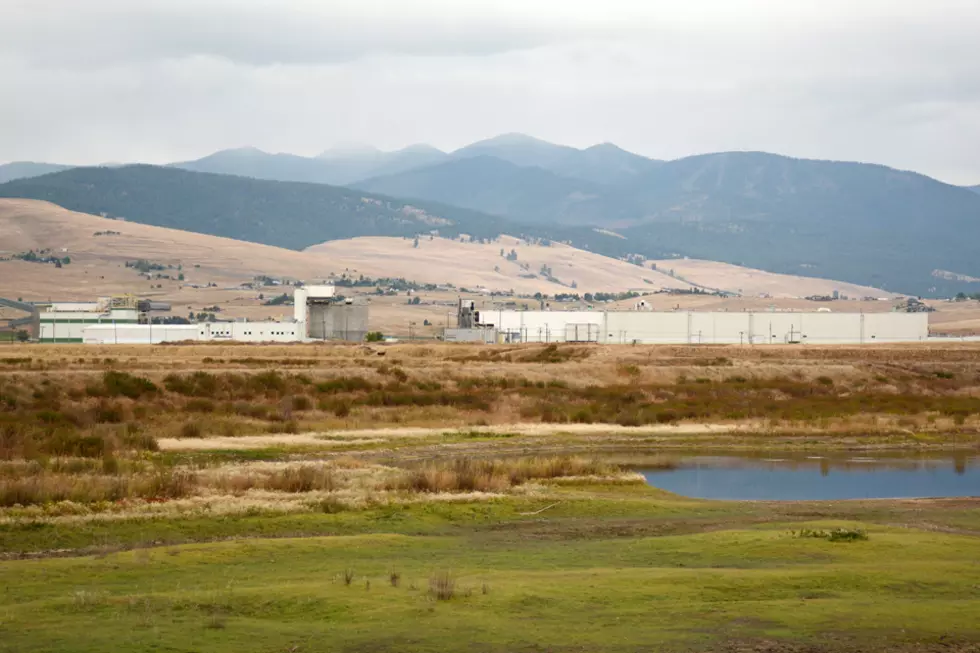
Missoula County approves Smurfit boundary line relocation; gravel mine mentioned
Saying they were handcuffed by state law, Missoula County commissioners on Thursday approved a request to relocate the boundary lines outlining five parcels on the sprawling industrial site that once housed the Smufit-Stone Container Corp. pulp and paper mill.
Any future request for industrial development, which could include a gravel mine, would be determined by the Montana Department of Environmental Quality. The county will ask DEQ to hold public comment regarding future gravel operation, even though the agency isn't required to do so.
“There was a lot of talk out there that a gravel pit is proposed for one of these areas,” said Commissioner Josh Slotnick. “The DEQ does that permitting, mostly administratively. It's up to DEQ on whether they want to hold a public hearing and really collect input on a gravel pit.”
MLH Montana, PA Prospect and David Wesley Harris petitioned the county seeking an exemption under the Montana Subdivision and Platting Act to relocate the boundaries of five adjoining tracts covering roughly 395 acres on the former mill site.
The property is included in an ongoing investigation by the U.S. Environmental Protection Agency regarding potential Superfund listing, and whether any contamination remains from past industrial activities associated with the former paper and pulp mill.
“It doesn't impact our Superfund boundary. That's decided by the EPA during the remedial investigation process,” said Allie Archer with the EPA. “We'll determine the matrix of contamination. It won't impact our Superfund boundary.”
An exemption under state law permits adjoining landowners to alter property lines without going through a full subdivision review. The county has regulations in place to determine if the relocation of common boundaries represents an attempt to evade subdivision review.
Beyond that review, commissioners said they were limited by state law on what they can and cannot consider when weighing a request to relocate property lines. Potential future uses cannot be considered when making such a determination, they said.
“The rebuttable presumptions of boundary line relocation don't consider use, geography, topography or ecological characteristics,” said Slotnick. “Boundary line relocations have to begin and end with the same amount of tracts and that's roughly it.
“It's easy to get sidetracked on the hot-button nature of this property and the very real ecological qualities and attributes of this area,” he added. “Unfortunately, in a boundary line relocation, it's not what we should be considering.”
Those who have advocated for the property's reclamation over the past decade have pushed to see the floodplain restored and the ecological values returned to historic uses for wildlife and habitat.
While the intended uses of the property remain unclear, talk of a future gravel mine have been mentioned more than once. A gravel operation also appears in a number of documents related to the relocation hearings over the past two weeks.
That concerns restoration advocates, including Larry Weeks, who has spent the past decade advocating for reclamation with habitat in mind. The property falls within the Five Valley Audubon Society's “important bird area” based on its values, including the cottonwood bottom lands.
Both the Lewis's Woodpecker and Mellow Flycatcher are listed as species of concern, yet they can be found in the LaValle Slough, which the boundary lines encompass on the Smurfit property.
“This area has outstanding wildlife values and is the best wildlife habitat at the mill site,” said Weeks. “It should be protected and designated as riparian buffer. I'm just trying to protect it. I just don't want to see it go to waste.”
Commissioners said they sympathized with such concerns but could do little to deny the boundary line relocation, given state statute. If the owners move forward with a proposed gravel mine, that would fall under the review of DEQ.
Commissioners said that would urge DEQ to hold public comment if the mine moves forward.
“Regardless of the somewhat narrowly focused question before us on whether the boundary line relocation is an attempted evasion of the Montana Subdivision and Platting Act, I'm an absolutely committed to this area being remediated and the floodplain restored,” said Commissioner Dave Strohmaier. “That's the end game we're looking at it.”
